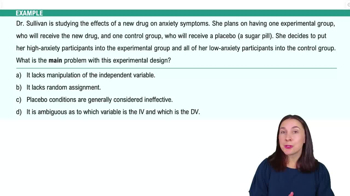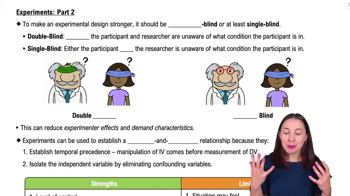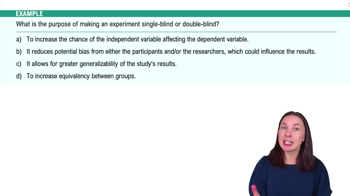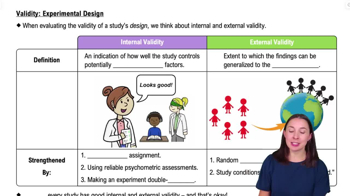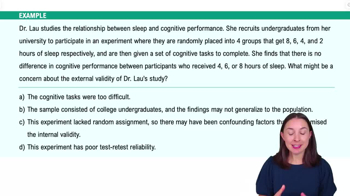Table of contents
- 1. Introduction to Psychology1h 43m
- 2. Psychology Research2h 20m
- 3. Biological Psychology2h 41m
- 4. Sensation and Perception28m
- 5. Consciousness and Sleep32m
- 6. Learning41m
- 7. Memory34m
- 8. Cognition37m
- 9. Emotion and Motivation35m
- 10. Developmental Psychology33m
- 11. Personality48m
- 12. Social Psychology41m
- 13. Stress and Health41m
- 14. Psychological Disorders44m
- 15. Treatment47m
2. Psychology Research
Intro to Research Methods
Struggling with Psychology?
Join thousands of students who trust us to help them ace their exams!Watch the first videoMultiple Choice
During the embryonic period of prenatal development, the embryo
A
remains unaffected by environmental influences.
B
becomes vulnerable to diseases the pregnant person may have.
C
still has no beating heart.
D
grows to about five inches long.
 Verified step by step guidance
Verified step by step guidance1
Understand the embryonic period: The embryonic period is a critical phase in prenatal development, typically occurring from the third to the eighth week after fertilization. During this time, the basic structures of the embryo begin to form.
Consider environmental influences: Contrary to the statement, the embryo is highly susceptible to environmental influences during the embryonic period. Teratogens, which are harmful substances like drugs, alcohol, or certain diseases, can significantly impact development.
Recognize vulnerability to diseases: The embryo can be affected by diseases the pregnant person may have, such as rubella or syphilis, which can lead to congenital anomalies or other developmental issues.
Heart development: By the end of the embryonic period, the heart is typically beating and circulating blood, which contradicts the statement that the embryo still has no beating heart.
Growth assessment: The embryo does not grow to about five inches long during the embryonic period. By the end of this period, the embryo is usually about one inch long, with major organs and structures beginning to form.

 1:46m
1:46mWatch next
Master Roadmap of the Lesson with a bite sized video explanation from Hannah Gordils
Start learningRelated Videos
Related Practice










